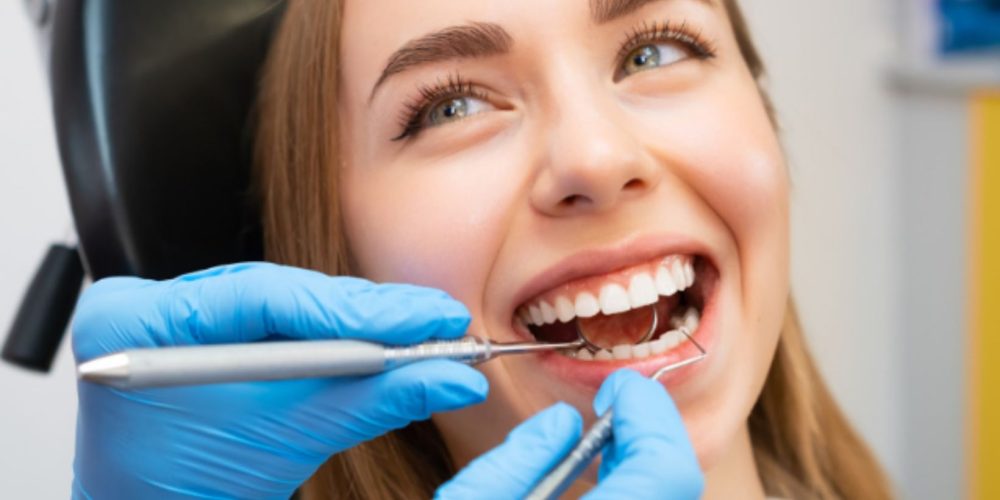If you’re facing the challenge of missing teeth and seeking a reliable solution, dentures might be the answer. Dentures play a critical role in restoring smiles, especially for those who have experienced significant tooth loss. They not only improve oral functionality, enabling easier speaking and eating, but also enhance facial aesthetics, boosting self-confidence and smile restoration. In this article, we delve into the world of complete dentures, providing an in-depth guide to help you understand their importance, types, and the process involved in acquiring them.
What are Dentures?
Dentures are custom-made replacements for lost teeth, created to restore both function and aesthetics. They play a vital role in improving oral health, aiding in eating and speaking, and enhancing facial structure. In addition, they also significantly boost self-esteem by providing a natural-looking smile.
Artificial teeth come in various forms, each tailored to specific needs.
- Complete dentures replace all teeth in a jaw, offering a full restoration.
- Partial dentures fill gaps left by several missing teeth, anchored to existing teeth for stability.
- Implant-supported dentures, a more recent innovation, are anchored onto dental implants embedded in the jawbone, providing improved stability and a more realistic feel compared to traditional ones.
Each type offers unique benefits, catering to different degrees of tooth loss and patient preferences.
A Detailed Look at Complete Dentures
Complete dentures are artificial replacements for all teeth, whether they are in the upper or lower jaw or both. They are devised to restore aesthetics, chewing, and speech. Full artificial teeth have three main surfaces:
- The impression surface of a dental prosthesis is designed to make direct contact with the soft tissues in the mouth, ensuring a snug and comfortable fit.
- The polished exterior refers to the outermost part of the prosthesis, often visible when the mouth is open. This area is smoothed and polished for aesthetic appeal and to prevent irritation to surrounding tissues.
- The occlusal surface is part of the prosthesis that comes into contact with the opposing teeth during chewing. It is crafted to mimic the look and function of natural teeth, facilitating efficient biting and grinding of food.

These prosthetics consist of a base, which rests on the oral mucosa and supports the denture teeth, which are usually crafted from acrylic resin or porcelain.
Classification of Complete Dentures
There are two types, each serving distinct needs and providing solutions for those with significant tooth loss.
Removable Complete
They are a traditional solution for those who have lost all their teeth in one or both jaws. Resting on the gums, they can be taken out and put back in by the wearer. They are tailored to fit the individual’s mouth, ensuring comfort and a natural appearance. Removable artificial teeth are more affordable and easier to clean, making them a popular choice.
Fixed Complete
Often known as implant-supported false teeth, they are anchored directly to the jawbone through implants. This type offers a more stable and permanent solution compared to the removable ones. They provide better chewing efficiency and a more natural feel, as they do not move around in the mouth.
Who Needs Them
Complete dentures are typically recommended for individuals with extensive tooth loss due to factors like severe periodontal disease, gross decay, or abscesses. They are also a viable option for those who cannot maintain their natural teeth due to a lack of motivation or financial resources for alternative treatments.
Aside from that, they are essential for edentulous patients (those without any natural teeth) and those who refuse partial implants. By replacing lost teeth, they restore facial contours and vertical dimension, significantly improving the patient’s ability to eat and speak properly.
The Denture Creation Process
The production involves a meticulous process, ensuring a custom fit and natural appearance. Here’s a step-by-step overview:
Initial Impressions
The journey begins with crafting a custom mold to ensure it aligns accurately with the individual’s mouth structure.
Bite Registration
This crucial phase involves recording the way the patient’s jaws meet. By capturing the alignment of the upper and lower teeth, the dentist can create a model that guides the accurate fabrication and fitting of the dentures, ensuring they are not only comfortable but also functional.
Fittings and Adjustments
During this stage, the dentist conducts several trials and makes necessary modifications. This iterative process is vital to confirm that they fit snugly and comfortably, providing the wearer with a natural feel and look.
Finalization
Once the fit is perfected, the final product is crafted. This stage ensures that the product fits not only well but also aesthetically matches the patient’s expectations, completing the transformation of their smile.
Each of these steps is integral to the creation of artificial teeth that are not just visually pleasing but also comfortable and functional, enhancing the wearer’s quality of life.
Adjusting to Life with Dentures
Adapting to artificial teeth can initially present some hurdles, particularly in articulation and mastication. New wearers often find their speech slightly altered, with certain words harder to pronounce. Eating also requires adjustment, as dentures can change the sensation and mechanics of chewing.

To facilitate a smoother adjustment, begin with softer food items, progressively introducing a diverse range of textures as you grow more comfortable. Incorporating personalized nutrition naturally into your diet can also aid in this transition. For improved speech articulation, consistent practice and a measured speaking pace are beneficial. Persistence is essential in this adaptation phase as your oral cavity, and muscles become familiar with the new artificial teeth.
Oral Hygiene and Denture Care
Maintaining dentures demands a dedicated hygiene routine. Daily cleansing is essential to remove food particles and prevent plaque buildup. Use a soft brush and non-abrasive cleaner specifically designed for artificial teeth. Soaking them overnight in a suitable solution helps keep them hygienic and retain their shape.
Equally important is the upkeep of your oral health; gently brush your gums, tongue, and palate every morning before inserting false teeth. Routine visits to the dentist are also crucial for professional cleaning and to ensure they remain well-fitted and comfortable, safeguarding against potential oral issues.
Conclusion
Complete dentures stand as a pivotal solution for those seeking to reclaim their dental health and aesthetics. They offer not just a restoration of function but also a renewal of self-assurance, helping you restore your smiles. Embracing this option can lead to a transformative journey in personal well-being. For tailored guidance and to ensure the best outcome, engaging with a dental expert is essential. Their expertise will assist in navigating the choices and nuances specific to your needs, ensuring your path to a rejuvenated smile is both smooth and successful.






